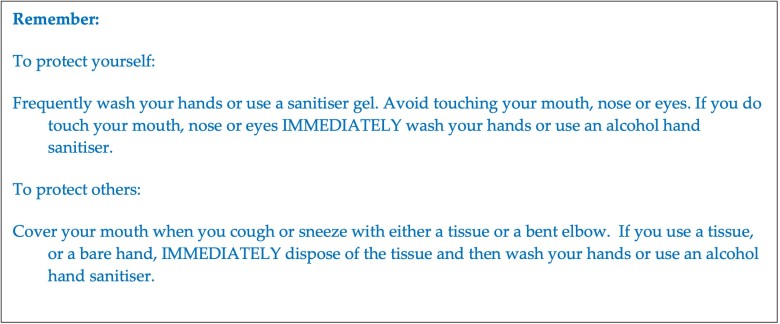Search
Guideline 10.3 - Good Practice Statement: Minimum Hygiene Requirements for Resuscitation and First Aid Training
Next review July 2024
Introduction

This document replaces Guideline 10.3: Cross infection risks and manikin disinfection. It should be used as a guide to the minimum hygiene requirements for resuscitation and first aid training.
General principles

Resuscitation and First Aid training involves physical and social interaction. Maintaining strict hygiene practices ensures the safety of both learners and instructors.
Any workplace-based training must comply with the health and safety requirements of the workplace. Where infection control restrictions are in place, such as requirements for physical distancing, training providers may need to consider the venue capacity. This may include setting a maximum number of participants for classes and workshops.
Many resuscitation training manikins have features that help prevent the spread of infection (including respiratory infections). Manufacturers should provide cleaning instructions specific to their manikins and these should be followed. Manikins should be maintained in good condition to enable effective cleaning and disinfection.

- The main infection risk in a classroom full of learners is in contact with other people and/or surfaces. Learners always need to observe a high standard of hand hygiene, with alcohol-based hand-sanitiser (or wipes if hand-sanitiser is unavailable) provided in addition to handwashing facilities.
- Gloves are ideal for short durations only in teaching, and do not replace good hand hygiene requirements. When removing gloves hand hygiene must be performed.
- Learners should be reminded to cough/sneeze into a tissue and dispose of this into a bin immediately, washing hands afterwards. Alternatively, coughing/sneezing into the bent elbow if no tissue available.
- Vulnerable people or those caring for or living with vulnerable people should not participate in person at a course during periods of high transmission in pandemics or epidemics. This process may require the use of pre-course screening questionnaires during pandemics or epidemics.
- Pre-course information should include advice that individuals exhibiting symptoms typical of an infection illness (e.g. fever, sore throat, cough, runny nose, vomiting, or diarrhoea) or have been in close contact with someone who has these symptoms, must exclude themselves from the course. This process may require the use of pre-course screening questionnaires.
- Should an instructor or learner become unwell during a course, they should exclude themselves immediately, and notification should occur in accordance with organisational health and safety processes.
- All participants need to be aware of the need to inform course facilitators if they are unwell with an infectious illness within 2 weeks of the course.
Manikins and equipment

- Follow national and local standards and recommendations related to infection control and follow manufacturer’s instructions related to specific equipment infection control practices.


